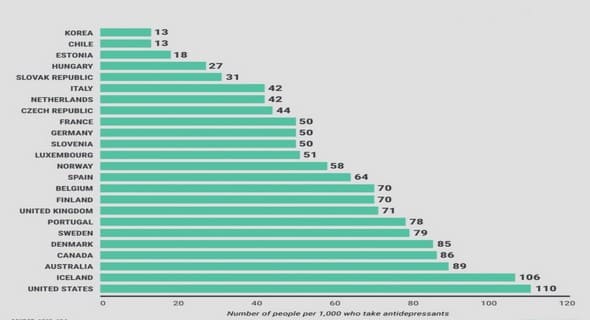(Downloads - 0)
For more info about our services contact : help@bestpfe.com
Table of contents
1. Introduction
2. Background Theory
2.1 Passive and Active Remote Sensing
2.2 Electromagnetism
2.2.1 Maxwell’s Equations
2.2.2 The Wave Equation
2.2.3 Plane Waves and Polarisation
2.2.4 A Superposition of Waves
2.2.5 The Poynting Vector
2.2.6 Waves at boundaries
2.2.6.1 Reflection and Transmission coefficients for H and V polarization
2.2.6.2 Total Reflection and the Brewster Angle
2.2.6.3 Wave Propagation in a lossy medium
2.2.7 Layered media
2.2.8 Antenna Radiation
2.2.8.1 Radiation from current sources: the Hertzian Dipole
2.2.8.2 Radiation from aperture sources
2.3 Dielectric Properties of Mixtures: Effective Media
2.3.1 Physical mixing formulas
2.3.2 The Semi-empirical Refractive Mixing Formula
2.4 Radiation
2.4.1 Important Quantities in Radiation and their definitions
2.4.2 Thermal Radiation
2.4.2.1 Black Body Radiation
2.4.2.2 Non-black body Radiation and Emissivity
2.4.3 Radiative Transfer
2.4.3.1 The Radiative Transfer Equation
2.4.3.2 The Simplified Radiative Transfer Equation
2.5 Passive Microwave Remote Sensing of Land
2.5.1 Emission of Bare Soil Surfaces
2.5.1.1 The soil dielectric permittivity constant in the microwave region
2.5.1.2 Non-uniform Temperature and Dielectric profiles
2.5.1.3 Rough Surface Scattering and Emission
2.5.2 Modelling the emission of the ground covered by vegetation
2.5.3 Note
3. Modelling the Emission of the Soil-Litter system
3.1 Microwave Emission of Soil: modelling the effects of a rough surface
3.1.1 A Semi-Empirical model for soil emission at L-Band
3.1.1.1 Q-h Model Formulation
3.1.1.2 Model Development
3.1.1.3 Comparing semi-empirical models to theoretical models
3.1.2 Analytical Models
3.1.2.1 General Approach
3.1.2.2 Different Analytical Models
3.1.3 Numerical Models
3.1.3.1 Methodology
3.1.3.2 Numerical Methods
3.1.3.3 Selection of the appropriate numerical approach
3.1.3.4 Validation of Numerical Methods
3.1.3.5 Problems of current interest
3.2 Modelling the contribution of the litter layer to forest emission at L-band
3.2.1 The Forest structure
3.2.2 Remote Sensing of Forests
3.2.2.1 Experimental data
3.2.2.2 Theoretical Models
3.2.3 Discussion
3.3 Choice of approach for modelling the soil-litter L-band emission in this thesis
4. The Numerical FEM Approach developed for Calculating the L-band Scattering and Emission of the Soil-Litter system found in Forests
4.1 Model Description
4.1.1 Ansoft’s HFSS software
4.1.2 Calculating the scattering and emission of forest multilayer structures using a numerical FEM approach
4.1.2.1 Building the structure
4.1.2.2 HFSS Simulations
4.1.2.3 Analysing Results calculated by HFSS
4.1.3 Note
4.2 A sensitivity analysis to set model parameters
4.2.1 Model Parameters and calculation conditions
4.2.2 Method and Results
4.2.2.1 Number of Rough Surfaces
4.2.2.2 Integration step, s
4.2.2.3 Type of incident beam
4.2.2.4 Surface size
4.2.2.5 Calculation Cost
4.2.3 Conclusions: Values determined for model parameters
5. Validation of the Numerical FEM Approach for a Single Layer
5.1 Comparison with Fresnel for a flat surface
5.1.1 HFSS calculation set up
5.1.2 Results and Conclusions
5.2 Comparison with the Method of Moments for a rough surface
5.2.1 Method of Moments data
5.2.2 Method
5.2.3 Results
5.2.4 Conclusion
5.3 Comparison between the numerical approach, experimental data and the AIEM model
5.3.1 SMOSREX 2006 dataset
5.3.2 Method
5.3.3 Results and Discussion
5.3.4 Conclusions
6. Emissivity of the Soil-Litter system: comparison with Experimental Data and the Schwank Model
6.1 The Bray 2009 Experimental campaign and the Schwank model predictions
6.2 Method
6.3 Results and Discussion
6.4 Conclusions and Perspectives
7. Conclusions
8. Perspectives



